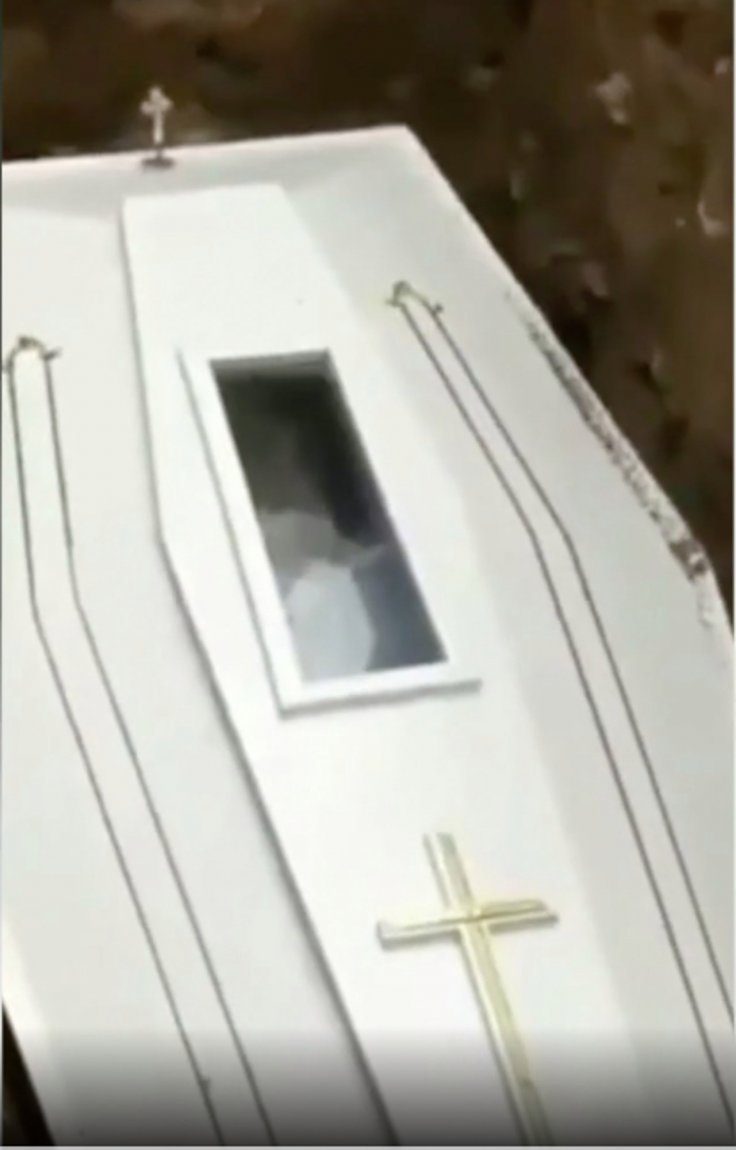In a spooky video, bound to send chills down the spine, a corpse was caught waving its hand from inside a coffin as it was lowered into the ground for burial, raising questions whether the victim was being buried alive.

The video of the burial ceremony being conducted in Indonesia has gone viral on social media.
Body's hand movement is visible from the clear glass on the coffin
In the video, the mourning family members of the deceased could be seen gathered around the priest as he read the prayers aloud. The video then moves on to show a white coloured coffin with clear glass top lowered into the ground for burial. "God has said in the book of John. I am the resurrection and the life. Whoever believes in me he will live even though he is dead," the priest is heard saying in the background.
Is this the hand of a dead corpse really moving or is it a trick of light or perhaps worse - did they bury this person ALIVE? This video was taken on 5th May in the city of Manado in Indonesia.#funeral #buried #strange pic.twitter.com/Udiza02ZHs
— Beyond Strange (@BeyoStrange) May 12, 2020
Within moments, a limb from inside the coffin is seen either pressing or waving against the coffin lid. A clear outline of a hand and fingers moving under the glass panel of the casket is visible in the nearly 25-second video clip. 7 News reported that the chilling video was captured during a Christian service in North Sulawesi, Indonesia, on May 5.
One user commented: "Yes, he waved, maybe he was still alive and try to dig his way out." The other wrote: "Maybe it's a mouse."
Studies suggest that corpse can move without assistance
The Sun quoted scientists as saying that the corpse was most likely moving around due to rigor mortis, the stiffening of the body classified as the third stage of death.
In a study published in Science Alert in 2019, researchers at an Australia-based decomposition research facility, found out that a year after death, corpses move around "significantly". The discovery was made using time-lapse cameras to film decomposing corpses over a period of 17 months.
The publication reported that researchers at the Australian Facility for Taphonomic Experimental Research (AFTER) used a camera to take overhead images of a corpse every 30 minutes during daylight hours. They found that for the entire duration, the corpse continued to move. "What we found was that the arms were significantly moving, so that arms that started off down beside the body ended up out to the side of the body," medical scientist Alyson Wilson of Central Queensland University told the Australian Broadcasting Corporation.









